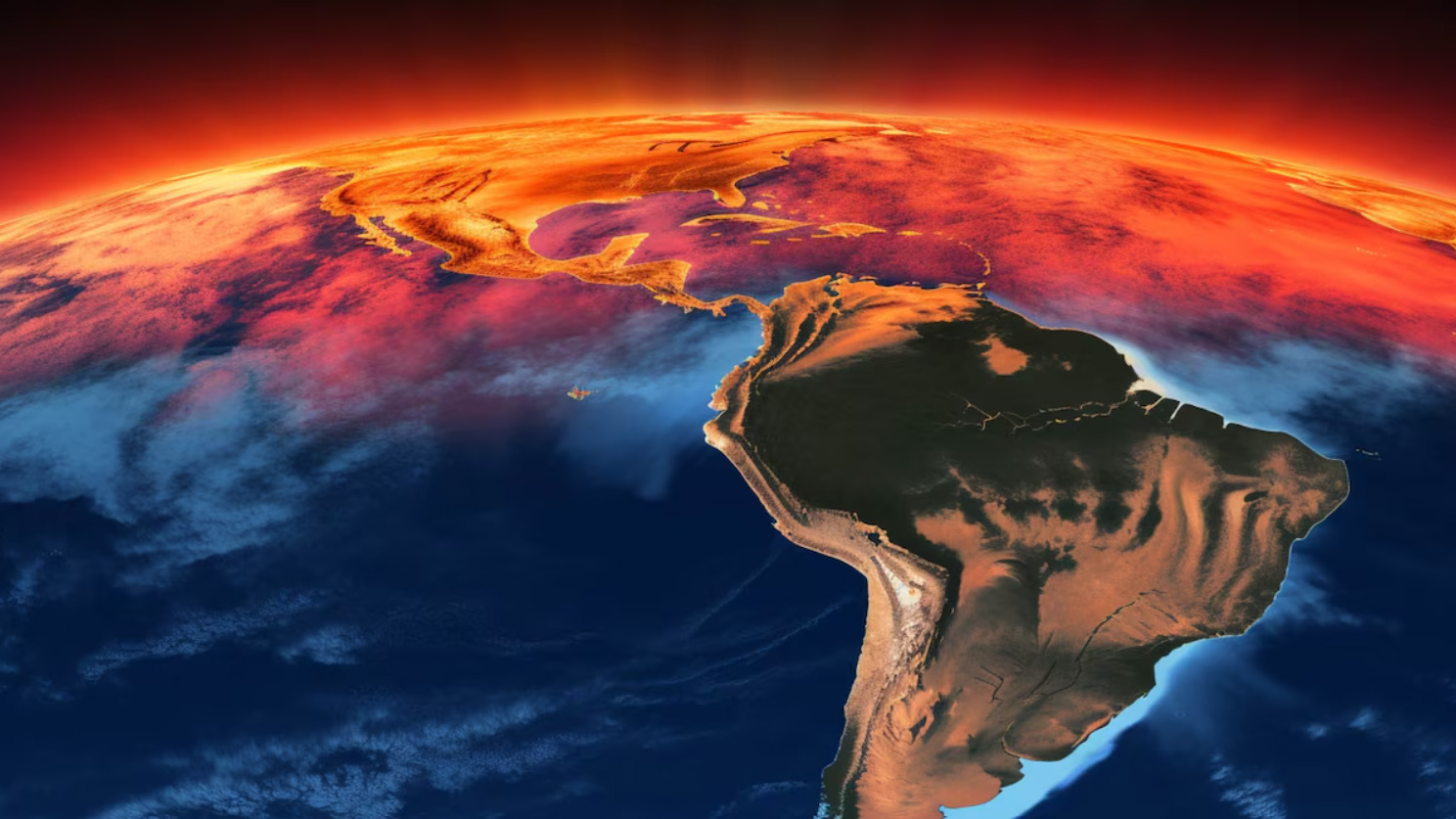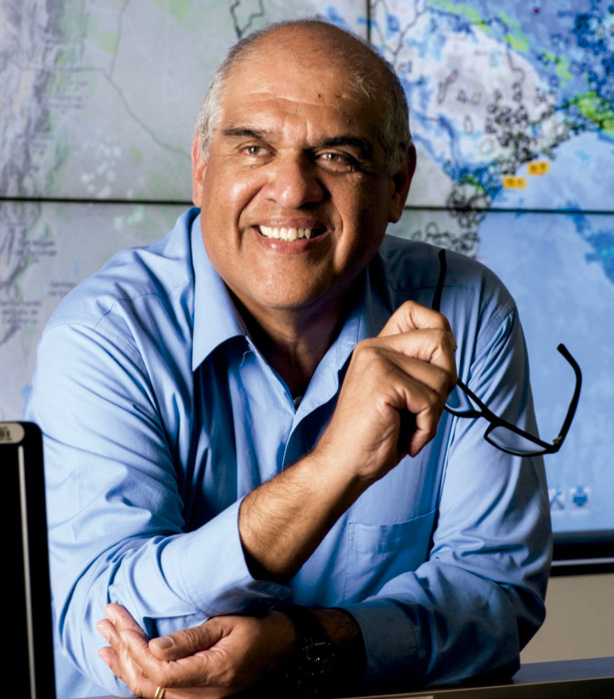José Marengo: "The 1.5°C was expected to be crossed between 2040 and 2050, but in 2024 we are already experiencing this level of warming."

By: Pilar Celi and Diego Monteza

José Marengo, Peruvian scientist who carries out research in the National Center for Natural Disaster Monitoring and Warnings (CEMADEN, for its acronym in Portuguese) in Brazil and is a member of the Intergovernmental Panel on Climate Change (IPCC), warns of the urgent need to act on climate change after exceeding the 1.5°C threshold in 2024.
For Marengo, COP30, to be held in Belém do Pará, Brazil, represents a crucial opportunity to address deforestation in the Amazon and to vindicate the fundamental role of indigenous peoples in protecting the environment.
In recent weeks, various organizations and media have pointed out that the global temperature increase has exceeded the 1.5°C limit. What are the implications of this fact?
The 1.5°C limit was established in the Paris Agreement after years of scientific studies, with a mandate not to exceed it in order to reduce the risks of climate change. A 2°C threshold was also defined.
We can imagine it as a traffic light: 1.5°C represents the yellow light, warning of a high risk of more frequent and intense extreme events. When 2°C is reached, the red light, the situation becomes even more critical.
The 1.5°C threshold was expected to be crossed between 2040 and 2050, but in 2024 we already experienced this level of warming.
The fact that the 1.5°C has been exceeded has generated confusion and misinformation. That is why it is important that you explain to us, how do the WMO and the IPCC collaborate in defining and monitoring the 1.5°C limit established in the Paris Agreement?
The World Meteorological Organization (WMO) is the main center for scientific data collection and analysis at the global level, and receives information from meteorological services such as Senamhi in Peru, Senamhi in Bolivia and INMET in Brazil, and from all meteorological and hydrological services in the world.
The IPCC was created jointly by the WMO and the United Nations Environment Programme (UNEP). Through collaboration with experts in environmental areas from all over the world, they evaluate scientific information and climate and hydrological studies published in the international literature, and prepare monumental reports on the physical basis of climate change, vulnerability assessment, adaptation to climate change, among others. On that basis, key references were established, such as the 1.5 °C limit defined in the Paris Agreement, based on their studies and projections.
Has the Paris Agreement failed after exceeding the 1.5 °C limit in 2024?
The fact that global temperature temporarily exceeded the 1.5°C threshold in 2024 does not immediately imply the failure of the Paris Agreement, but it does represent a critical global warning sign.
If this trend continues over the next ten years, and warming continues to exceed 1.5°C, then we can say that the situation is really serious.
We expected these values in the middle of this century and we passed 1.5°C in 2024, that is, between 15 and 25 years earlier than expected. Let us also consider that at 2°C the adaptation will already be very complicated.
In addition, the political context also plays a crucial role. An eventual withdrawal of key countries, such as the United States, would significantly weaken global commitments, reducing the chances of keeping warming below dangerous levels. Effective compliance with the Paris Agreement by all nations is fundamental to slow the advance of climate change and avoid scenarios of greater risk.
What factors have contributed to the increase in global temperature, and what climate trends can we expect by 2025 in the context of climate change?
The warmest years on record, such as 1998, 2016, 2023 and 2024, have coincided with the presence of the very strong El Niño phenomenon, which has contributed to the increase in global temperature.
However, beyond these climatic events, there is a clear long-term warming trend, driven by anthropogenic climate change, i.e. caused by human activity.
By 2025, El Niño is not expected to be present, and it is possible that a La Niña event will develop, which if intense could generate some cooling. However, the general global warming trend is likely to continue, although it is possible that 2025 will not be as warm as 2023 and 2024 due to the absence of El Niño. So far, January 2025 is considered to be the warmest January on historical record.
What are the main human activities that contribute to the increase in global temperature?
Activities that increase the concentration of greenhouse gases are the main culprits, such as the burning of fossil fuels and livestock farming, which generates methane. Deforestation also plays a crucial role, as cutting down forests reduces CO₂ absorption capacity, and burning trees also emits greenhouse gases, accelerating regional and global temperature increases.
Precisely now that you mention deforestation and with the upcoming COP30 to be held in Belém do Pará, Brazil, how do you position the issue of the Amazon?
COP30 is crucial because it puts issues such as forest fires, desertification and the destruction of the Amazon on the global agenda. It is urgent to reduce deforestation to zero, since any logging, legal or illegal, eliminates the capacity of forests to clean the atmosphere. Moreover, Belém do Pará, being an Amazonian city, highlights the importance of the Amazon in the global climate context, reminding us that tropical forests, such as those of the Amazon, Equatorial Africa and Southeast Asia, play a fundamental role in the balance of the world's climate. These forests act like the engines of an airplane: if one fails, the others try to compensate, but if they all fail, the «plane» goes down.
COP30 in the Amazon highlights the need to prioritize its protection, although it is also important to continue the discussion on desertification and sea level rise in small islands, always with a focus on shared responsibility and the need for rich countries to finance adaptation funds. It is also important to highlight indigenous knowledge in the conservation of the Amazon.
Could we say that indigenous communities will play a crucial role during COP30?
In Brazil and elsewhere, the value of indigenous knowledge in environmental protection is increasingly being recognized. For example, the Amazon Science Panel published the Amazon Encyclopedia in 2021 and is currently being revised in 2025, incorporating the expertise of researchers and technicians from indigenous communities. This knowledge, passed down from generation to generation, often has scientific bases that many ignore, but which are fundamental to the preservation of ecosystems. It is important to recognize that, in many cases, indigenous peoples know more about their territories than many Western scientists or experts.
How important is regional coordination in Latin America to face climate challenges and what proposals are there to strengthen this cooperation?
Regional coordination in Latin America is crucial to address climate challenges, which range from hurricanes in Central America to droughts, forest fires and heat waves in other parts of the continent.
COP30 represents an excellent opportunity for Latin American countries to present a common position but it would also be beneficial to have a Latin American COP, focused on the specific climate problems of the region. Cooperation between countries is key to creating effective strategies to address the extreme phenomena that affect the entire region.
A few years ago, I asked you about the actions people need to take to address climate change, and you suggested that we focus on environmental policies.
Ten years ago, we could talk about using fewer vehicles and promoting more sustainable alternatives, but today, the solutions must go deeper. Action must come from governments and companies.
As citizens, our responsibility is to become environmental activists by pressuring our governments to implement effective environmental policies. In the context of elections, it is essential to elect those who prioritize climate change and sustainable development, as it is governments who define the policies needed to address this global crisis.
← Previous
Next →
Stay up to date
Receive a summary of the most relevant news about companies and sustainability. Every month, free of charge!


